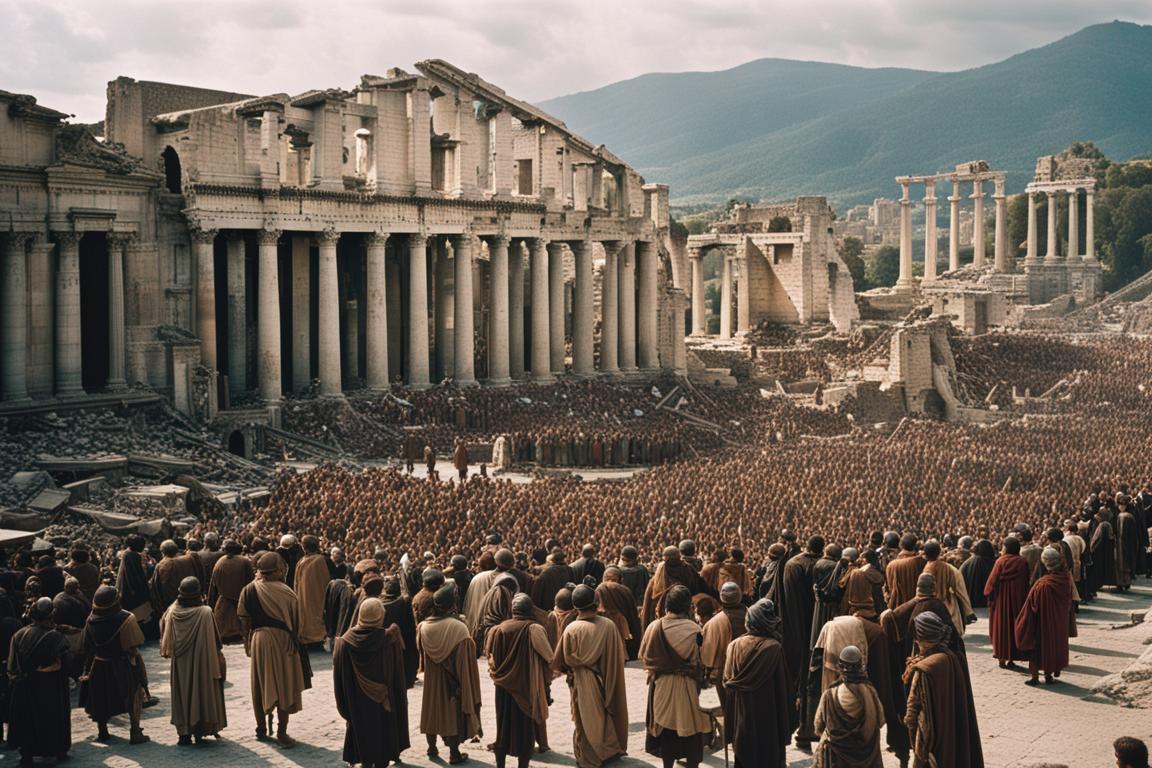
The Black Death swept across Europe in the 14th century with a ferocity that no one had anticipated. But in this grim twist of fate, the plague was even more deadly, claiming up to 90% of the population in some regions. The sheer scale of the devastation reshaped the very fabric of society, plunging the continent into an era of darkness and transformation that would last for centuries.
In the early days of the outbreak, as villages and cities fell silent, the survivors were few and far between. Entire families perished, and those who remained were often too weak or terrified to venture outside their homes. The once bustling streets of Paris, London, and Florence became desolate, filled with the haunting echoes of past lives. The fields, untended and overgrown, symbolized the collapse of an agricultural system that could no longer support the population.

Among the survivors was a young woman named Isabella, who had lost her entire family to the plague. Isabella, a former farmer’s daughter, found herself alone in a world that had changed beyond recognition. She wandered from village to village, seeking any semblance of life, and eventually joined a small group of survivors who had banded together for mutual protection. This group, led by a charismatic former merchant named Robert, became her new family.
Robert’s group moved constantly, scavenging for food and supplies in the ruins of towns and cities. They faced not only the threat of the plague but also bands of desperate, lawless individuals who preyed on the weak. The group’s survival depended on their unity and their ability to adapt to the harsh new reality. Robert, with his keen sense of strategy and leadership, guided them through numerous perils, but he knew that their current way of life was unsustainable.
As they traveled, they encountered other groups of survivors, each with their own stories of loss and resilience. From these encounters, Robert realized that the only way to rebuild was to establish a permanent settlement, a place where survivors could gather, grow food, and protect each other from the outside world. After months of searching, they found a secluded valley with fertile land and a freshwater stream. Here, they began to build their new home, naming it New Hope.
The confrontation came when a rival group, led by a ruthless former noble named Baron Edmund, discovered New Hope. Baron Edmund’s group was larger and better armed, having plundered their way across the countryside. They demanded that Robert and his people surrender their settlement and resources. Robert, understanding that a direct confrontation would be disastrous, proposed a parley.
During the tense negotiations, Isabella played a crucial role. Her knowledge of farming and resource management impressed even the hard-hearted Baron Edmund. She proposed a plan for cooperation rather than conflict: both groups could merge, sharing their skills and resources to create a stronger, more resilient community. Though wary, Edmund saw the wisdom in her words and agreed to a temporary truce.
The integration of the two groups was fraught with challenges. Distrust and old grievances surfaced frequently, threatening to tear the fragile alliance apart. However, under Robert’s and Isabella’s joint leadership, the community gradually began to thrive. They established a council where representatives from both groups could voice their concerns and make decisions collectively. This system of governance, though primitive, laid the groundwork for a new societal structure based on cooperation and mutual respect.
Years passed, and New Hope grew into a thriving settlement. The fields were once again green with crops, and children played in the streets without fear. The combined knowledge and efforts of the survivors led to innovations in agriculture, medicine, and governance that were unprecedented in the old world. Isabella, now a respected leader in her own right, often reflected on how far they had come from the days of wandering and despair.

The resolution of this dark chapter in history came not from the restoration of the old ways, but from the creation of something entirely new. The survivors of the Black Death had forged a community that valued life, knowledge, and cooperation above all else. The lessons learned from their shared hardship became the foundation for a society that, though born from tragedy, held the promise of a brighter future.
In this world, the memory of the Black Death remained a somber reminder of the fragility of life, but it also stood as a testament to human resilience and the enduring spirit of hope. The catastrophic plague, more deadly than any could have imagined, ultimately led to the birth of a new era where humanity, scarred but unbroken, found a way to rise from the ashes.




